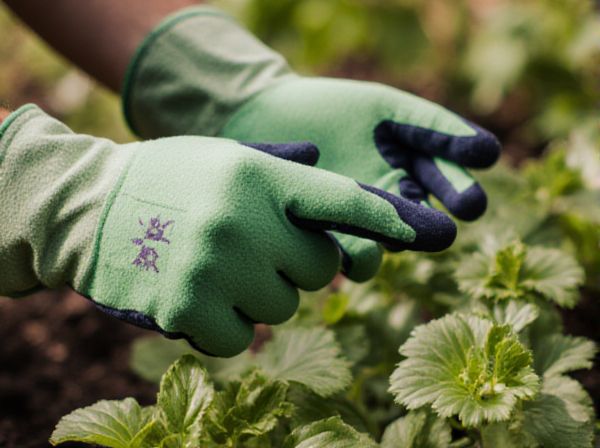
Permaculture gardening vs Conventional gardening Illustration
Permaculture gardening emphasizes sustainable, eco-friendly practices that work with natural ecosystems to enhance soil health and biodiversity. Conventional gardening often relies on chemical fertilizers and pesticides, which can degrade soil quality and harm beneficial organisms. Permaculture creates resilient, self-sustaining gardens by integrating plants, animals, and natural resources, reducing environmental impact.
Table of Comparison
| Aspect | Permaculture Gardening | Conventional Gardening |
|---|---|---|
| Soil Health | Focuses on soil regeneration using compost, mulch, and minimal disturbance | Often relies on synthetic fertilizers and regular tilling, leading to soil degradation |
| Water Usage | Emphasizes water conservation through rainwater harvesting and drought-resistant plants | Uses regular irrigation with higher water consumption and potential runoff |
| Biodiversity | Encourages diverse native plants and companion planting to support ecosystems | Monoculture practices dominate, reducing biodiversity and habitat variety |
| Pest Management | Utilizes natural predators, polyculture, and organic methods to control pests | Depends on chemical pesticides and herbicides for pest and weed control |
| Energy Efficiency | Designs for minimal energy input with natural cycles and renewable resources | Often requires diesel fuel, electrical equipment, and synthetic inputs |
| Environmental Impact | Promotes sustainability, carbon sequestration, and ecosystem restoration | Contributes to pollution, soil erosion, and loss of natural habitats |
| Yields | Produces stable, long-term yields through resilient ecosystems | Often achieves high short-term yields but with potential soil depletion |
Introduction to Permaculture and Conventional Gardening
Permaculture gardening emphasizes sustainable ecosystems by integrating plants, animals, and natural resources to create self-sufficient environments, minimizing external inputs and waste. Conventional gardening often relies on synthetic fertilizers, pesticides, and regular soil disturbance to maximize crop yields within short cycles. Understanding the principles of permaculture introduces a holistic approach to land management, while conventional methods prioritize productivity and immediate results.
Core Principles of Permaculture Gardening
Permaculture gardening emphasizes holistic design principles such as earth care, people care, and fair share, promoting sustainable ecosystems that mimic natural patterns. Unlike conventional gardening, which often relies on synthetic inputs and monoculture practices, permaculture integrates diverse plant species, soil regeneration, and water conservation methods to create self-sustaining environments. This approach enhances biodiversity, improves soil fertility, and reduces environmental impact while supporting long-term agricultural productivity.
Key Methods in Conventional Gardening
Conventional gardening primarily relies on synthetic fertilizers, chemical pesticides, and herbicides to enhance plant growth and control pests, often prioritizing immediate yield over long-term soil health. Tillage is frequently used to prepare soil, which can lead to erosion and loss of organic matter. Monoculture planting patterns dominate conventional methods, reducing biodiversity and increasing vulnerability to pests and diseases.
Soil Health: Natural vs. Synthetic Approaches
Permaculture gardening emphasizes enhancing soil health through natural methods such as composting, mulching, and crop rotation, which build microbial diversity and improve soil structure. Conventional gardening often relies on synthetic fertilizers and chemical inputs that provide quick nutrient boosts but can degrade soil quality and reduce biodiversity over time. Sustainable soil management in permaculture fosters long-term fertility and resilience, contrasting with the short-term productivity focus seen in conventional practices.
Water Management Techniques Compared
Permaculture gardening employs water management techniques such as rainwater harvesting, swales, and mulching to enhance soil moisture retention and reduce irrigation needs, promoting sustainability and ecosystem health. Conventional gardening often relies on regular irrigation systems that can lead to water runoff and inefficient water use. Emphasizing natural water cycles, permaculture minimizes water waste while boosting plant resilience in diverse climates.
Pest and Disease Control Strategies
Permaculture gardening employs natural pest control methods such as companion planting, promoting biodiversity, and enhancing soil health to create resilient ecosystems that reduce the need for chemical interventions. Conventional gardening often relies on synthetic pesticides and fungicides to manage pests and diseases, which can disrupt beneficial insect populations and lead to pesticide resistance. Integrating permaculture principles results in sustainable pest and disease control strategies that emphasize ecological balance and long-term garden health.
Crop Diversity and Plant Selection
Permaculture gardening emphasizes diverse crop selection and polyculture systems that mimic natural ecosystems, enhancing soil health and pest resistance. Conventional gardening often relies on monoculture and single-crop planting, prioritizing yield over biodiversity. Integrating multiple plant species in permaculture supports ecological balance and sustainable food production.
Sustainability and Environmental Impact
Permaculture gardening promotes sustainability by mimicking natural ecosystems, enhancing soil health through composting and crop diversity, which reduces the need for chemical fertilizers and pesticides. Conventional gardening often relies on synthetic inputs that can degrade soil quality and harm local biodiversity, contributing to pollution and increased carbon emissions. Emphasizing permaculture principles leads to lower environmental impact, improved water retention, and higher resilience against climate change effects.
Long-Term Yields and Productivity
Permaculture gardening emphasizes sustainable agricultural practices that enhance soil health, biodiversity, and water retention, resulting in stable long-term yields and resilient ecosystems. Conventional gardening often relies on synthetic fertilizers and pesticides that boost short-term productivity but can degrade soil quality and reduce yields over time. Permaculture systems optimize natural processes, promoting continuous productivity by building fertile, self-sustaining environments that increase crop resilience and harvest consistency year after year.
Choosing the Best Gardening Method for Your Needs
Permaculture gardening emphasizes sustainable, self-sufficient ecosystems by integrating native plants, soil health, and water conservation techniques, fostering biodiversity and long-term productivity. Conventional gardening often relies on chemical fertilizers and pesticides, focusing on maximizing yields with more intensive maintenance and input costs. Selecting the best gardening method depends on your environmental goals, available resources, and commitment to eco-friendly practices or high-yield output.
Permaculture gardening vs Conventional gardening Infographic

 gardendif.com
gardendif.com